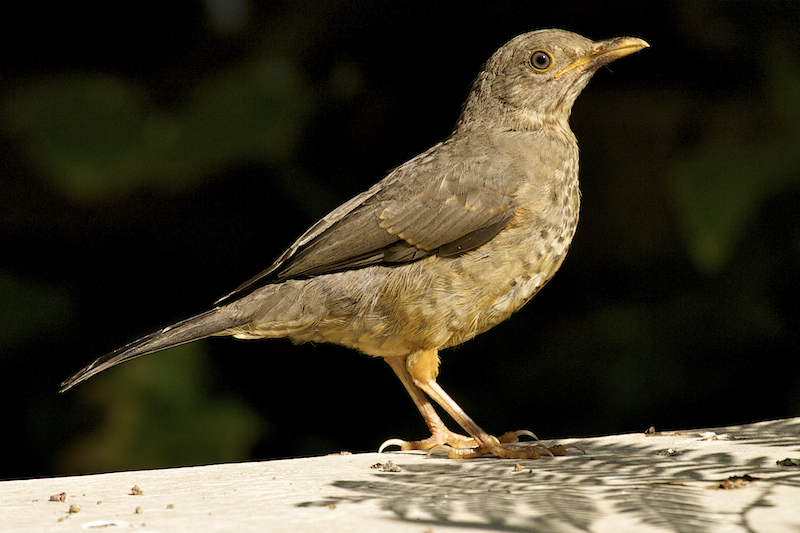Karoo Thrush
Turdus smithi- Habitat:Woodland, gardens and even semi-arid Karoo.
- Diet: Insects and fruit.
- Status: Common breeding resident.

- Calls: Typical thrush-like song, with an energetic, chirpy tone to phrases. Phrases are highly varied. Tchink alarm and flight call. Youngster has a simpler and thinner version of the adult call. Fledglings beg with a unique single-noted trint call.
- Similar looking: Olive Thrush (Distribution. Has no black on top of the bill and a more havily streaked throat than Olive.) Kurrichane Thrush (Lacks the striking malar stripes of Kurrichane Thrush)
- Similar sounding: Very similar to Olive Thrush song but not as beautifully whistled as Olive Thrush. At present, Karoo Thrush is not known to mimic like Olive Thrush does. More trills and more musical than Kurrichane or Grounscraper Thrushes.
Fun facts
Karoo thrush is one of the first birds to start the dawn chorus, often starting when there is almost no light at all.
The family name "Thrush" originates from an old English word "thrusche" which was used to describe a cheerful person. It is probably due to their beautiful songs that this family got its name.
ID pitfalls
Looks very similar to Olive Thrush and best separated on distributiion. It does however have heavier streaking on the throat than Olive.
Be careful not to mistake the malar stripes on the juvenile Karoo Thrush for those of Kurrichane Thrush.
Youngsters may look like some female Rock Thrushes but is nowhere nearly as bright orange below.
Where to find one
Common and obvious throughout its range. Easily found in most gardens, parks and suburbs.

 Adult - Craighall Park, Johannesburg. All images copyright Simply Birding.
Adult - Craighall Park, Johannesburg. All images copyright Simply Birding.
 Juvenile - Craighall Park, Johannesburg. All images copyright Simply Birding.
Juvenile - Craighall Park, Johannesburg. All images copyright Simply Birding.